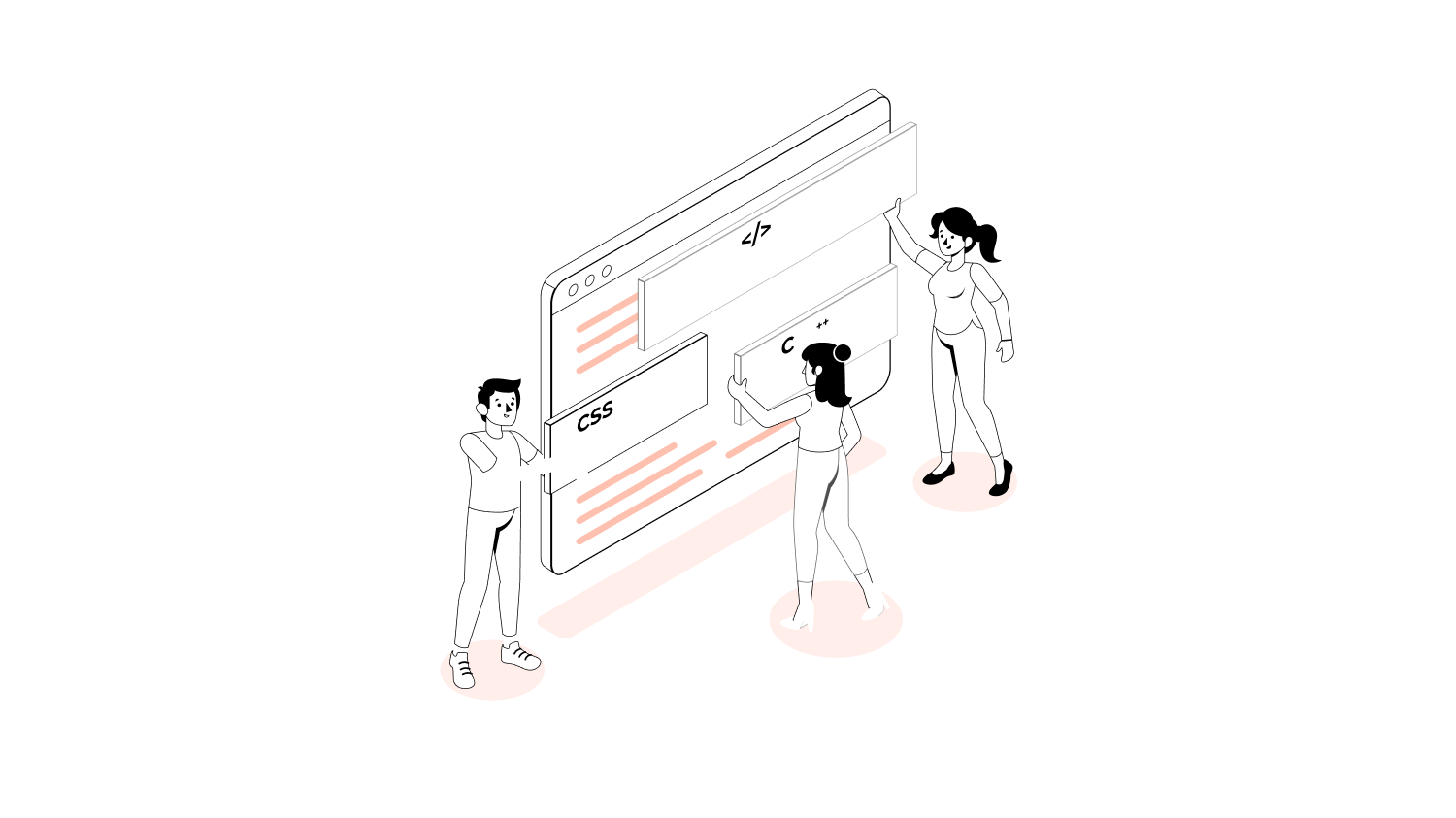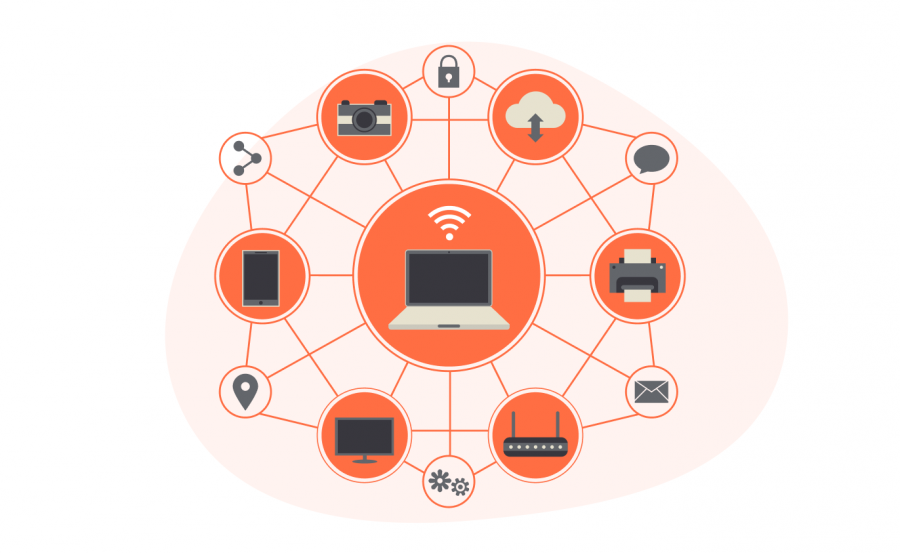Do you think a great idea is all it takes to launch a startup?
You could be right. But, if you want to launch a successful startup, you’ll need more than an idea up your sleeve.
You hear stories of great startups taking the marketplace by storm.
Startups led by visionaries, who employ innovative methods to delight their end-users. Startups that overcome all adversities to succeed in niche markets. Startups who are recognised with laurels from well-wishers and envy from competitors. The list goes on.
But, have you given a thought to the startups that don’t make it? It’s unlikely that you will read about the startups that start out with amazing ideas and yet end up with nothing to show for it.
Statistically, there are millions of new startups hitting the market every single year. But, if you look at how many of those startups make it to see another New Year’s Eve party, well, the numbers don’t look so good.
In 2019, the reported success rate of startups was around 10%. This means 90% of these millions of startups quietly pack up and leave the scene once the going gets tough. The reasons for their failure to make it in a competitive market can vary.
From bad product ideas and poor management to lack of funds and bad marketing, the reasons could be pretty much everything in between.
Sounds scary? It shouldn’t. Not if you’re well prepared before you go into battle to secure your spot in your marketplace.
Also Read: 35 Best Profitable Tech Startup Ideas for Beginners [With Examples]
Why Do You Need a Business Model?
If you’re still planning to wing it, scroll up and read the failure statistics of startups once more.
The above statistic is why you need a business plan to steer your startup in the right direction and keep it relevant in the marketplace in the years to come. And to have a business plan, you need to decide on the business model you wish to implement for your startup.
Your business model will be the star of the show, as your business plan will revolve around it. So, you need to carefully evaluate the different types of business models available and choose the one that would work best for your business.
Now, this can get a little tricky, given a large number of business models out there. But, having an idea about the different types will give you an idea about which one would work best for your specific business needs. You can even mix and match a little and combine the best parts of different business models to develop a unique model for your business.
Stick with us from the starting till the end, and we’ll give you an idea about how to customise your business model. First, let’s explore the best and most widely seen business models in today’s market.
1. Marketplace Model
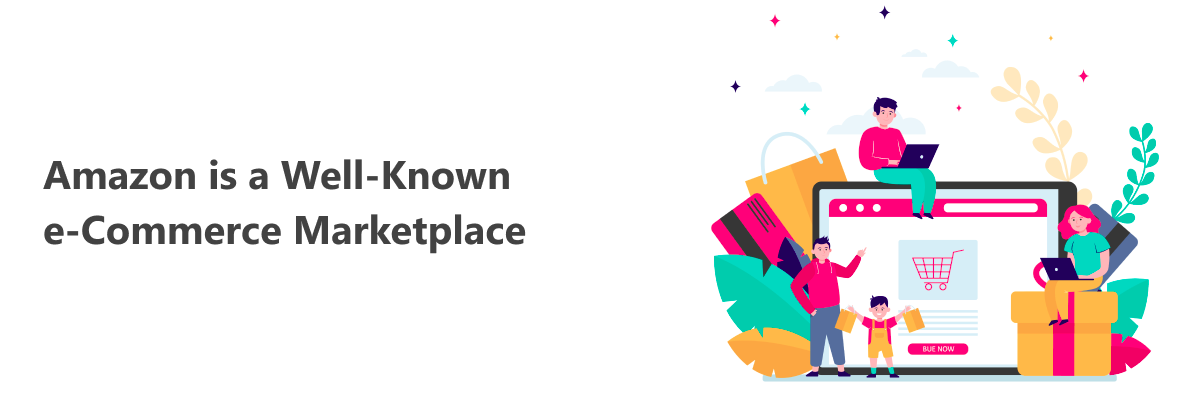
The marketplace business model is one where the business owner facilitates transactions between buyers and sellers. Think of an old-timey souk, which is a great example of the marketplace model. It’s an interactive commercial space where merchants set up stalls to display their goods and consumers walk around and see what they like before making a purchase.
The merchants will have to pay a fixed amount to the owner of the souk in exchange for the opportunity to showcase and ultimately sell their wares on the owner’s land. One of the main advantages of having a marketplace model for your startup is that you won’t have to worry about the inventory aspects of your offerings.
These days, the marketplace model is one of the most commonly seen business models in e-commerce. E-commerce is the online transfer of goods and services in exchange for money. Consider Amazon, which follows the marketplace model. Basically, Amazon provides the space for sellers and buyers to interact.
Now, in this case, the sellers can be manufacturers, distributors, or resellers. Sellers list their products on the website for potential buyers to purchase. They pay a subscription fee to Amazon for letting them put up their products on Amazon’s website. And Amazon handles the advertising of products as well as the last mile of the product delivery.
Also Read: 15 Easy Steps to Build a Successful E-Commerce Mobile App
2. Reseller Model
The reseller model is a type of business model that has striking similarities to the marketplace business model. There are, however, a few key points that set it apart from a marketplace model.
For one, the inventory and logistics of the products sold through this model are handled solely by the reseller or distributor who has listed the products for sale. eBay is a popular example of a reseller business model.
While a marketplace model gives resellers the chance to utilise their local information, in a reseller business model, the distributors are expected to fend for themselves. They handle their own promotions, prices, and customer service, as opposed to a marketplace model.
If you have firsthand information about the products you wish to sell, and are ready to handle the entire marketing and logistics of your offers, then the reseller model would be more your speed. You can also build your client base faster with a reseller model.
If you opt to list your product in a marketplace, your customers are more likely to be loyal towards the marketplace you utilise rather than direct interaction with your brand. The type of product and your interest in connecting with your end-user are usually the main deciding factors when you’re trying to choose between a reseller business model and a marketplace business model.
3. Franchise Model
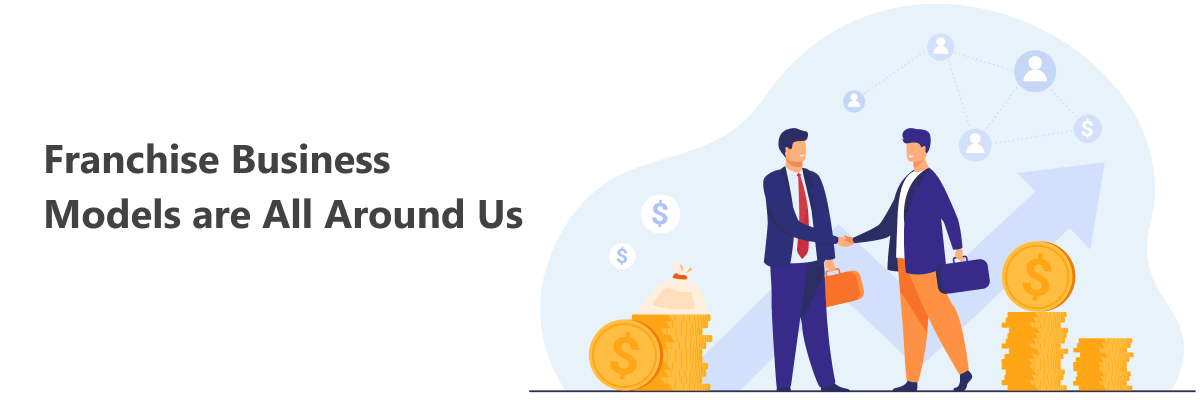
The franchise model is perhaps the business model that you are most familiar with. We grew up hearing about famous fast-food chains opening new franchises all over the world. And it’s not just fast-food chains- most businesses you come across in your daily life are franchise models.
McDonald’s is a famous example of the franchise model. You’ll notice that the business blueprints of McDonald’s around the world are similar. It doesn’t matter whether you are walking into a McD in the United Arab Emirates or one in California. Your senses will be assaulted with the ubiquitous red and yellow of Ronald McDonald and the delicious smell of french fries.
And that’s exactly how a franchise model works. A franchise is a tried and tested business model blueprint that can be purchased by anyone who wishes to start their own business.
The buyer, or the franchisee, then replicates the intellectual property he purchased to set up his own chain. The original owner, also called the franchisor, will get a share of the profits made by the franchisee. In return, he will help the new buyer with the business operations, such as marketing and financing to ensure that the franchise runs smoothly.
4. Freemium Model
Now, this is an extremely smart business model that plays on human psychology. Consumers generally want the best of everything, don’t they? Better products, better services, better prices. The freemium model lets your end user get a taste of what’s to come, and gets them hooked. And then makes them pay for the whole meal! Let us explain.
As a startup, you can use a tiered approach to get your customers to subscribe to your products or services. You can do this by offering certain services without any hidden charges to your end users. Once they are comfortable with your services, you can put together a premium package that offers more exclusive services and additional features which will be beneficial to your users.
Think of LinkedIn. It’s free of cost, and it basically works as your online resume. You use it for networking and job-hunting and it has become an integral part of your professional career. While the free services LinkedIn offers are common to all, you can utilise exclusive courses, certifications, and features like the LinkedIn Sales Navigator only if you pay an access fee. This model combines free-features with pre-mium features to become the freemium model.
5. Subscription Model
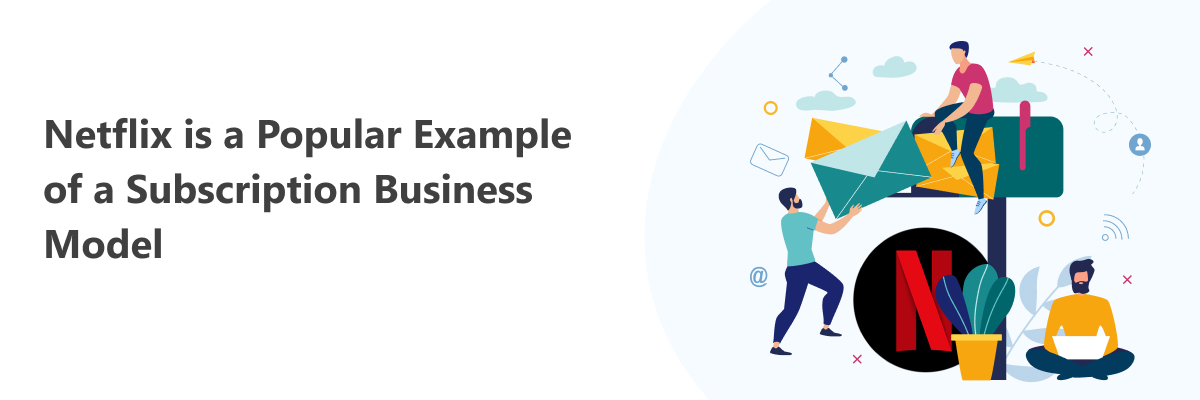
Subscription models are gaining popularity worldwide across different businesses, but they’ve existed since the times of newspapers and magazines. Remember those days when your postman dropped off a daily paper or a monthly magazine you subscribed to?
If you want your end-users to engage with your startup frequently instead of facilitating one-time sales, then this is the business model that you need to look into. In a subscription model, you can see that the end-user is always focused on convenience.
Let us look at a few examples!
Think of Netflix, which is a hard-to-miss example of the subscription model. Netflix stores huge databases of visual content that you can access and binge-watch if you pay a monthly subscription fee. They have countless movies, documentaries, and TV shows that you can stream at any point of time without going to the trouble of purchasing them. All you need is a smart device and enough internet data.
Subscription business models are also commonly seen in e-commerce. There are many business-to-consumer stores that offer subscription e-commerce, which means consumers won’t have to place the same order over and over again.
For example, if you’re planning a startup to deliver fresh groceries to your end consumers directly, it would be a good idea to give them the option of opting for a subscription model so that they won’t have to bother with recurring orders.
The recurring sales also help you analyse and predict your annual turnover. Knowing your potential sales targets can help you streamline your business strategies and even aid with investor pitches for your startup.
Also Read: How Much Does it Cost to Create an App Like Netflix
6. On-Demand Model
The on-demand model is also known as the product-to-service model, and is all around us. In an on-demand business model, users purchase the end result that comes from an equipment instead of the equipment itself. You get to utilise a service as and when you need it, instead of investing in the actual equipment that delivers the service.
For example, let’s say you want to go shopping at your nearest supermarket and there’s no one to give you a ride. What do you do? Hail an Uber, of course. You don’t buy a car just to make a grocery run!
Uber uses the on-demand business model to cater to its end users. The Uber driver shows up, drops you off at your location, you pay your cab fare, and that’s it! You have no more obligations to the car or the service provided by the Uber driver.
The on-demand business model is not limited to taxi services alone. The same model is applied in businesses that help you order food, groceries, medicines, and more online. A delivery person will pick up your order when you make a demand and have it safely delivered to your doorstep. The on-demand business model is cost-effective and utilises freelance labour to deliver results.
Also Read: A Step by Step Guide to Build an On-Demand Courier Delivery App
7. Disintermediation Model
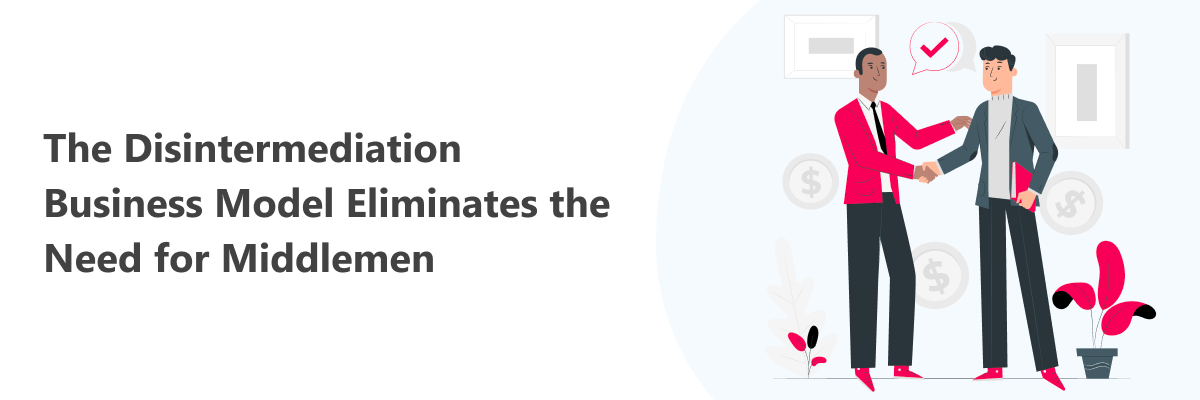
The disintermediation type of business model, also known as the direct sales business model, is popular because it eliminates the need for middlemen. Direct sale not only reduces the cost for everyone involved, but also removes the hassles of having a middleman.
And, if there are no middlemen in the picture, the transactional share that would otherwise be earmarked for them can be distributed between the seller and buyer. This is feasible for both manufacturers and buyers in the long run.
Think about it. If you sell a product directly to your customer, then you won’t need to spend money on stocking your wares in stores and displaying them to potential buyers. This means that you can offer much cheaper prices to your user users, which will get your brand more customer loyalty.
A direct sales business model is feasible for your startup if you have the necessary resources to manufacture goods and handle the logistics without involving a third-party distributor. Dell is a great example of the disintermediation model, as they distribute their products directly to their end users without engaging in traditional retail cycles.
8. One-for-One Model
The one-for-one business model, also known as the buy-one-give-one model, is an ingenious business model that inspires customer loyalty through altruism. It was popularised in 2006 by Blake Mycoskie, the founder of TOMS shoes, when he offered to donate a pair of shoes every time a customer made a purchase.
Consumers were happy that they got the product they needed and were also able to help needy children around the world. Although this model has faced some backlash over the years, it ensures that everyone involved is satisfied.
TOMS gained publicity and devised its marketing strategy around its business model, buyers were happy with their good-deed-for-the-day, and tens of thousands of children worldwide got free footwear.
There are many startups that follow the buy-one-give-one business model, with some even giving back with products or services that aren’t necessarily labour-intensive to produce.
For example, you could plant a tree for every product your consumers buy from you, or donate to a charitable cause with a percentage of each sale that you make. The one-for-one business model is good for your startup if you are ready to take up the responsibility of being in the public eye as a company that gives back to society.
9. Leasing Model
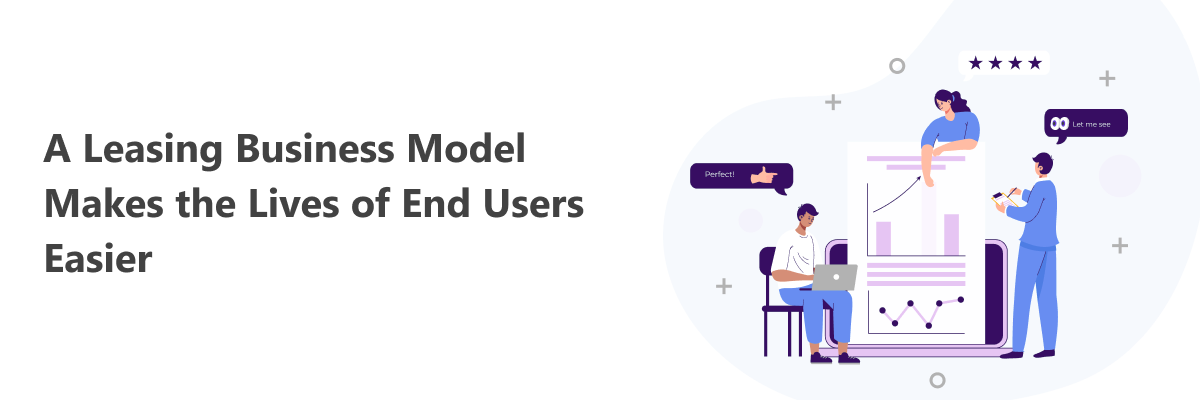
A leasing business model is ideal for your startup if you can identify a demand for leased goods in your marketplace. In this type of business model, the company first purchases a product from a manufacturer or seller and then leases it out to another entity for a periodic amount.
The leasing model is popular in cases where the end consumer needs a product for a short period of time only, making it practical for them to rent it instead of purchasing it themselves.
These products can be high-end products like electronic equipment, furniture, or even apartments. If you want to adopt a leasing business model for your startup, then you need to have sufficient capital to invest in procuring the products that you will ultimately lease to your end users. Take a look at different sources of funding for your startup.
Think of people living in leased apartments who would be looking to furnish the place temporarily for the duration of their stay. They would not want to invest in expensive furniture that they will have to lug around every time they move.
The simplest solution for them would be to rent furniture from reliable service providers and pay a monthly fee in exchange for the leased furniture. You may be familiar with Rent-a-Center, a business offering the leasing business model, which allows its customers to rent furniture and electronics for periodic dues.
10. Virtual Goods Model
Virtual goods are intangible commodities that are purchased online. They are commonly seen in gaming platforms. As such, the virtual goods business model is mostly utilised by game developers. When game developers offer bonus packs and extra lives, players spend real money to buy these virtual goods that serve a purpose in their online gaming interactions.
A great advantage of this business model is that you don’t need to worry about inventory storage, as you will store the goods you sell, in the world wide web. All you need is a good team of developers and some creative thinking to guide you.
Consider PUBG, one of the biggest multiplayer online games to have hit the market. In 2020, PUBG exceeded 3.5 billion dollars in microtransactions of virtual goods, after offering players exclusive virtual goods such as rare attire for the players’ avatars.
Facebook is another business that utilises a virtual goods model to attract and engage its users. There are various virtual gifts that you can purchase on Facebook for your online friends in exchange for money. Many businesses that operate on this business model set up virtual goods stores within the games they develop to make the purchase cycle easier for users.
11. Bundling Model
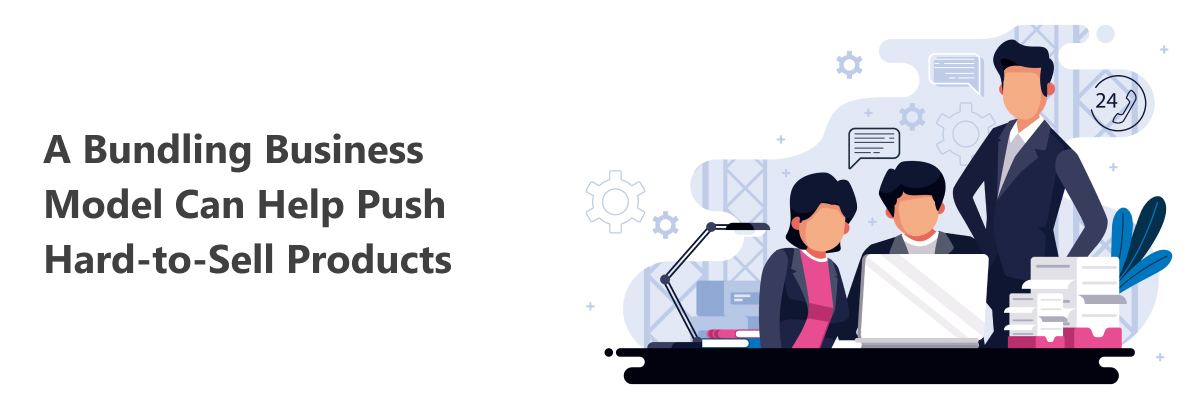
The bundling model is as simple as it sounds – you bundle up goods and services together and then sell them at a price that is lower than if the items were sold separately. The bundling business model will result in larger sales, but may also result in lower profit margins if the goods are not priced just right.
Let’s take Burger King as an example to understand this model better. Burger King employs the bundling business model when it creates value meals for its customers.
For example, you could get a cheeseburger, fries, and coke bundled together at a lower price than if you bought each item separately. If you use this business model, customers will tend to buy more due to the attractive prices, and you can even bundle hard-to-sell items with quick-moving products to accelerate their sales.
12. Razor and Blades Model
Razor and blades is a smart business model that you won’t have to search far to find. Just step out to your nearest pharmacy to find a great example of this model – razors and blades!
You’ll notice that while the razors are modestly priced, it costs a lot more to get a set of fresh blades. The pricing is also tailored such that you won’t be tempted to just buy a new razor instead of a new set of blades.
Companies that utilise the razor and blade business model produce goods or services that are cheap in comparison to the accessories that accompany them. It’s interesting to note that there is also a reverse razor and blades model. Businesses first launch an expensive product and supplement it with cheaper accessories that are must-haves.
A classic example of this is Apple. Apple produces costly products like the Apple Mac and attracts more custom from its users with necessary accessories such as chargers.
13. Hidden Revenue Model
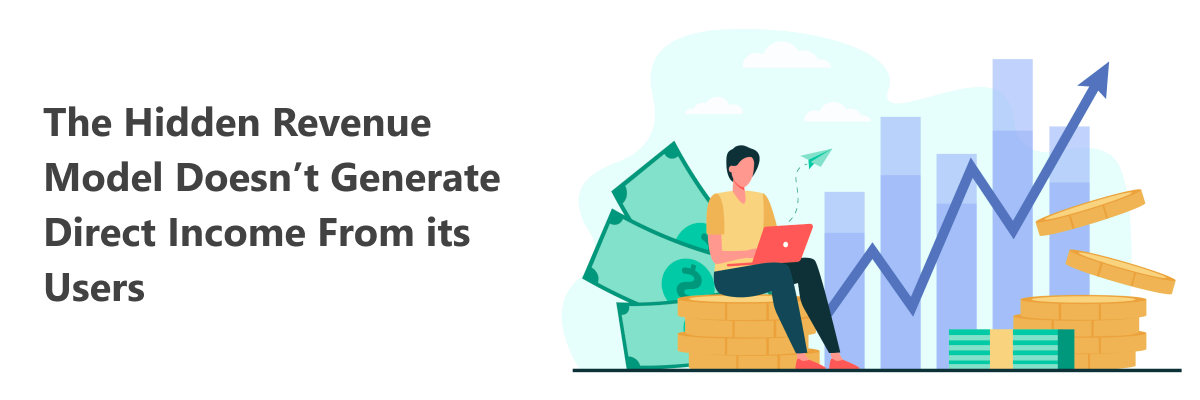
The hidden revenue business model lives up to its name. As an end-user, you won’t have to pay any money to partake in the services offered by businesses that utilise the hidden revenue business model.
Google is perhaps one of the most popular examples of the hidden revenue business model. We use Google daily to find information ranging from healthy recipes to job openings, and everything in between, yet we don’t pay a penny for our search results.
So, how does a business that uses the hidden revenue business model make any money to stay in business? Simple. You can make a lot of money with advertisements and marketing campaigns. Google basically acts as a giant and infinitely big virtual billboard for millions of people around the world.
Businesses can run paid promotions to get their products more visibility and better rankings on Google’s search engine. And every time someone clicks on a pay-per-view campaign, Google gets paid by the advertiser.
14. Crowdsourcing Model
Let’s use a simple example to understand how a crowdsourcing business model works. How does Wikipedia work? You can get information on pretty much any subject under the sun on Wikipedia, yet they do not have a dedicated team of experts putting together those millions of pages of information.
Wikipedia lets its users write and update information on its pages, except in rare cases to prevent vandalism or the propagation of false information. This gives Wikipedia access to an almost infinite talent pool with different ideas and knowledge about diverse subjects.
The company using a crowdsourcing business model can engage with its users and take feedback and opinions to perfect its offerings in the long run.
15. Unique Model

You might have noticed that many businesses use business models that are a combination, rather than a rigid definition.
Amazon, for example, can be classified under a marketplace business model or a reseller business model. YouTube can come under the hidden revenue business model or the crowdsourcing business model. Another well-known example of a unique business model is Decathlon, a sporting goods store that is on a mission to make sports affordable for all.
Decathlon cannot be classified under any conventional business model type, because they developed a model that serves the unique goals of the organisation. Decathlon manufactures and distributes their own goods, and eliminates the middlemen.
This helps them offer their goods and services at much lower retail prices to their customers. This means they are following a combination of the distribution business model and the disintermediation business model.
You alone know what’s best for your startup business. Once you establish a working business model for your startup that is curated to meet your organisational goals, you could come under the unique business model classification too!
You can also take a look at 50+ most successful small business ideas for 2022.
Conclusion
No two business models are quite the same, much like no two startups are the same. Every business has a distinctive vision, which translates to specific business needs. You cannot rely on the business decisions made by the startups before you if you want to charter your own course to success. What worked for someone need not work for you.
As such, the business model you adopt for your startup should be exclusive to your business. Your business model can also be one that has never been documented before! Go through your requirements, and get an idea of how you wish to cater to your audience. This will help you find a business model that is tailored for the unique services your startup has to offer.
At NeoITO, we make it our mission to help you with product development services that align perfectly with your chosen business model. And it doesn’t matter what type of business model you opt for, we have you covered!

